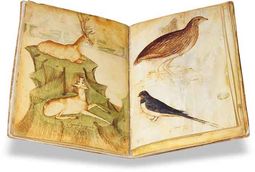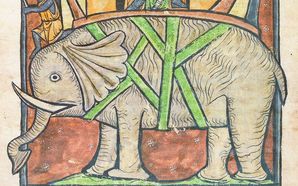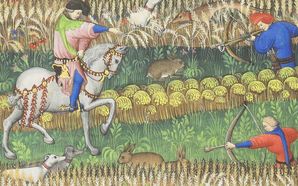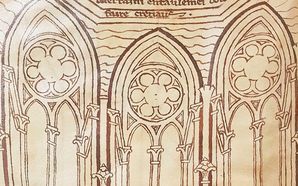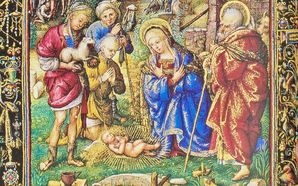Model Books
Artists, like most people in the Middle Ages, were greatly limited in their exposure to the wider world, but were expected to depict it nonetheless. Therefore, model books were useful tools for transmitting what were deemed the proper ways of depicting various letters, patterns, human poses and faces, and animals - exotic beasts in particular.
Originally intended to be resources for apprentices, model books gradually became known as sketchbooks and their purpose also changed at this time. They were now used to display a variety of styles as well as demonstrate the skill of the artist or workshop to their clientele. They not only helped to win over new patrons, but aided them in dictating the design of their personalized manuscript. Finally, these codices have left behind an artistic legacy that helped to inspire later generations of artists in the Early Modern Period.
Demonstration of a Sample Page
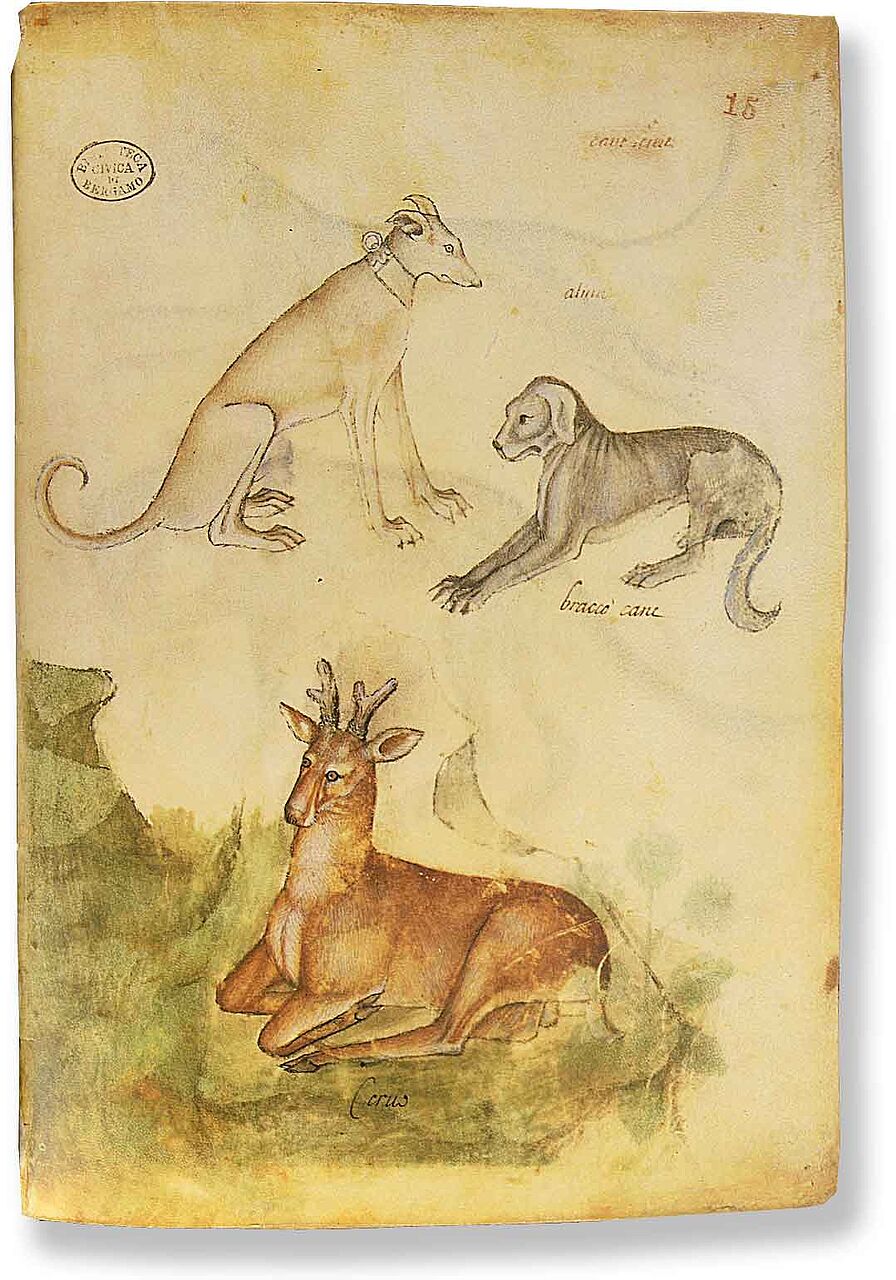
Model Book of Giovannino de Grassi
Young Stag and Hunting Dogs
In a time when travel was expensive and dangerous in equal measure, artists had to learn much about the world from model books, which exhibited various calligraphic styles, artful patterns, models of human gestures and expressions, as well as plants and animals. Later versions thereof were used by artists to consult with patrons for the sake of personalizing their manuscripts.
This page presumably served as a template for hunting scenes or similarly themed marginalia. Relaxing on the grass in the foreground, we see a four-point stag, still too young to be a trophy. Above, we see two hunting dogs used in his pursuit: a type of greyhound or possibly an Alaunt sitting on the left, and an early form of bloodhound or mastiff stretching on the right.

